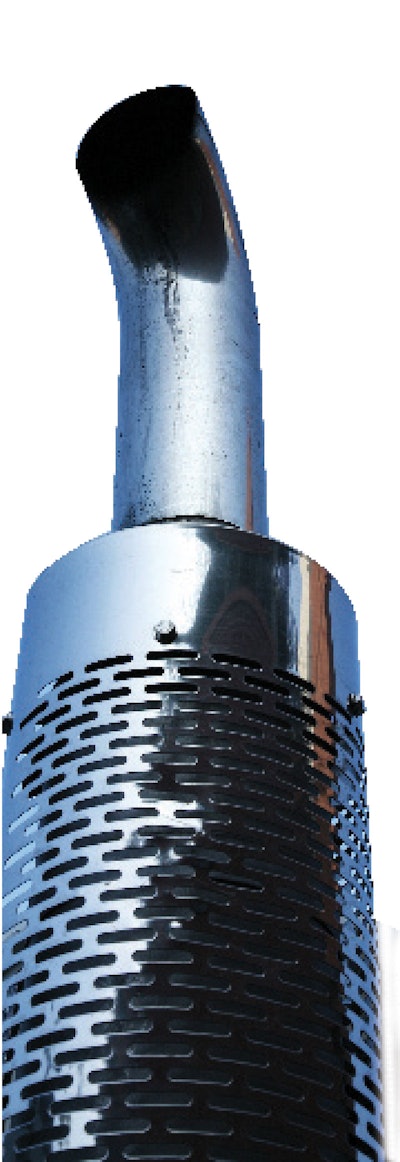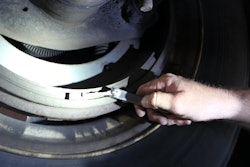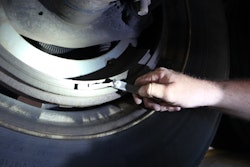The National Highway Traffic Safety Administration (NHTSA) has issued the following recalls:
* Kenworth T270, T330 and T370 (model year 2008-2010) and Peterbilt 335, 340 and 367 (model year 2008-2010) vehicles built with Cummins diesel engines may be designed with a hard-wired, dash-mounted switch that enables the vehicle operator to inhibit aftertreatment diesel particulate filter regeneration in environments where the driver believes it may be unsafe for elevated exhaust temperatures. Due to an issue with the logic in the ECM software in these engines, the switch may not function correctly, leading the operator to believe that the switch is in “inhibit” mode when it is not. This condition will permit hot exhaust gases to exit the vehicle tailpipe, increasing the risk of melting or burning of nearby surfaces, or a fire.
* There may be insufficient clamping force of the cylinder lock plate on MCI D4500/4505 (model year 2009) coaches equipped with Meritor FH 946, 14,000-lb. rated steerable tag axles. This condition may cause the axle to move forward from its normal set position, which in turn could result in the tag axle not automatically locking or locking with the wheels not in a straight ahead position. If the tag axle does not lock above 20 mph, there is a loss of lateral force control of the tag axle that can affect the steering of the vehicle. Also, during a turn, the rear of the vehicle will swing further out in the opposite direction of the turn and could result in the coach striking another vehicle increasing the risk of a crash.
* On Freightliner Business Class M2 medium-duty trucks and Freightliner Custom Chassis S2 vehicles manufactured between April 21 and July 2, 2009, and model year 2010 Thomas Built school buses equipped with TRW IGEN 3 intermediate steering columns, the weld around the steering shaft tube that secures the spline tube to the intermediate tube may be mislocated (not fully over the seam created when the tubes are pressed together). Mislocated welds may result in torsional and axial strength falling below acceptable levels. This condition could result in separation of the steering column, loss of steering control and a vehicle crash without warning.
* On certain model year 2005 through 2010 Daimler heavy-duty trucks manufactured from October 29, 2005, through July 3, 2009, under certain conditions, the left-hand, inner tie rod end may loosen over time. If not corrected, it could separate from the steering rack. A separated tie rod assembly can result in loss of vehicle control at higher speeds.
* On certain Daimler Trucks (model year 2004-2010) equipped with Caterpillar C15 engines, the variable actuation oil line may rub against the p-clips retaining the oil line. This can cause an oil leak, which could result in a fire.
* On certain Daimler Trucks (model year 2008 through 2009) equipped with Indiana Mills and RollTek side-roll protection systems, the sensor designed to detect vehicle roll can malfunction causing the side airbags to inadvertently deploy. Inadvertent deployment of the side airbags could result in a vehicle crash or injury to an out-of-position occupant.
* Certain kingpins Type 64 and 65 sold for use as aftermarket equipment by SAF-Holland for tractor trailers contain defects that will allow the kingpin to crack resulting in the separation of the tractor trailer. Serious injury or death could occur should the tractor trailer separate while in operation.
* On certain model year 2009-2010 Freightliner and Sterling vehicles equipped with Detroit Diesel DD13 EPA07 engines manufactured with grid heaters, the increased internal grid heater resistance caused by improperly tightened screws may melt the solder on the grid heater circuit board leading to a short circuit. A short circuit could result in a vehicle fire and injury to vehicle occupants. The engine control logic will be reprogrammed to provide cold weather starting without the need of a grid heater. Wiring to the grid heater will be removed.
* Certain model year 2008 and 2010 Freightliner M2, Custom Chassis, MT55 and Sterling Acterra vehicles manufactured between April 4, 2007, and July 15, 2009, equipped with Cummins ISC CM2150 and ISL CM2150 model diesel engines may be designed with a hard-wired, dash-mounted switch that enables the vehicle operator to inhibit aftertreatment diesel particulate filter regeneration in environments where the operator believes it may be unsafe for elevated exhaust temperatures. Due to an issue with the logic in the ECM software in these engines, the switch may not function correctly, leading the operator to believe that the switch is in “inhibit” mode when it is not. This condition will permit hot exhaust gases to exit the vehicle tailpipe, increasing the risk of melting or burning of nearby surfaces, or a fire.
* The weather resistance properties of the air intake duct rubber cushions on certain model year 2007 through 2009 Sterling 360 vehicles is insufficient. During normal vehicle operation, the rubber cushions deteriorate and crack. All of the rubber cushions could crack, allowing the air intake duct to fall off of the truck, increasing the risk of a crash.
* Certain 1998 to 2005 model year Volvo VN and VNL trucks equipped with sealed TRW drag links are failing without warning. This results in a loss of steering. The sealed links are not greaseable but do require a quarterly inspection. That inspection consists of checking for looseness in the steering wheel and checking for axial movement at the ball socket by pushing and pulling on the socket. Any movement requires replacement. Volvo believes that the drag links are not defective, and suggests that the quarterly inspections are not being performed. n
Exhaust System Checks
Kenworth offers the following tips for proper exhaust system maintenance:

* Make sure that the hangers supporting the exhaust system are neither too loose nor too tight. Either condition will cause noise.
* Install a resonator to cancel out “bad” sound.
* Installing a dual muffler/”Y” connector system also can reduce noise. The “Y” connector is installed so that the two pipes run out of the original one and each leads to a muffler.
* Inspect the area around the muffler’s clamps for cracks and rust-through.
* Check elbows, stacks and exhaust pipe. Dented or crushed tubing restricts exhaust flow and increases back pressure. Even small dents will reduce fuel economy and increase turbocharger wear.
* Add a rain cap to the stack pipe to prevent a slurry of soot being blown on the trailer.
* Check clamps for cracking. n







